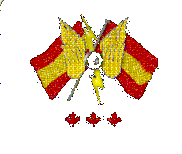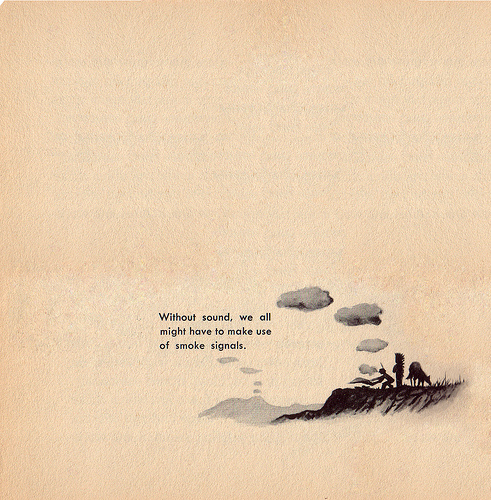Telegraph – the old information super highway
The telegraph can actually be considered the grandfather of the data superhighway – the telegraph operated on a digital format (on/off mode). (Lubrano, 1997, pg. xiv)
Ancient writings and pictograms of civilizations long gone are forms of communications that existed and provide clues to the intricate workings of a society. As a rule, these forms of communications have long been abandoned by cultures which now fill history books. These inscriptions, like most primitive dialects, were only effective in reaching those peoples that encountered and could interpret the material. The ability to distribute knowledge was limited to the geographical location of the text. Ancient writings, employed for knowledge transfer, have impacted all societies to some extent; if only as the result of cultures colliding in an increasingly smaller world. As with most messages, these writings were created to transfer the thoughts and knowledge of a society. It is this desire to “spread” the word is that is in essence the arching goal of communication; achieve a faster and more efficient means to transfer the message. Amazingly, this desire to expand knowledge was not always embraced. Much like the history of the Internet, prior desires to communicate across space and time are filled with progressive steps and changing literacy.
Literacy is defined as the ability to read and write. Reading, as described by Ong is the conversion of a text “to sound, aloud or in the imagination, syllable-by-syllable”. (Ong, 1982, pg.8) Imagine if text could exist in the form of finite signals and codes that could be “read” by a viewer and transcribed or transmitted for others to see. Imagine the origins of distance communication and the impact upon societies isolated by time and geography. Thus begins the story of telegraphy.
Telegraphy, as detailed by the Encyclopaedia Britannica is “derived from the Greek words tele, meaning “distant,” and graphein, meaning “to write.”” (Encycopedia Britannica, 2009). While we normally identify the telegraph to be an electromagnetic based system of transmitting dots and dashed (Morse code), this belief is flawed. Telegraphy existed long before in the simplest forms of distance communications. Early forms of telegraphy, describe in Iliad, included smoke and fire signals used to communicate during daylight and night times.
Fire signals were used extensively by watchers and scouts. Unlike other signal types, they did not normally serve to transmit orders but were instead used to convey simple messages, and they were considered to be quite valuable in this role. (Russell, 1999, pg. 146)
The earliest forms of telegraphy employed a simplistic code as a means to articulate the message. Often times, due to the geographical limitations and rudimentary technology (i.e. blanket, fire and fresh grasses) of the telegraphy, the message was pre-arranged to define only important events such as ‘danger’, ‘victory’ or a ‘summons’.
Image downloaded From Flickr 28 Oct 09
Another form of visual telegraphy that impacted society was signal flags used mainly by government and mariners worldwide. The optical telegraphy or semaphore is “is an alphabet signalling system based on the waving of a pair of tower constructed or hand-held flags in a particular pattern.” (Croft, Unknown) Used extensively by the French government during the French revolution, and by naval fleets (still employed by use of hand held flags), the semaphore system provided distance communications thru a series of sequential stations that conveyed the messages. As the alphabet was the “code” of semaphore, the message could be as complex as required to effectively convey significance and importance. Given these new advances in complexity of the transmitted message through the use of the alphabet, limitations did exist including the time to record the signal and retransmit to the next station and the requirement to have a constant vigil for incoming signals. The semaphore system was eventually abandoned as a “law was enacted imposing jail sentences and stiff fines (up to 10,000 francs) on “anyone transmitting unauthorized signals from one place to another by means of the (Chappe) telegraph machine.” (Neuman, 1996). Besides fears of rising public opinion, the semaphore system “required extensive manpower and was expensive to operate. Stations were seldom more than eight miles apart and were subject to interruption due to adverse weather conditions.” (Lubrano, pg. 10)

Communications
Semaphore flags in background. Electrical Bolt symbolic of electric telegraphy.
Picture curtisy of http://navalcommunicator.com/index.html
In addition to the prehistoric visual telegraphy, audio telegraphy was used to gap distances beyond line-of-sight. In Africa, drums were (and still are) commonly used as a means to convey messages across distances to both humans and gods. Among the Ashanti people of Ghana, two styles of drumming: signal and speech exist for communications purpose. Communications by drumming employs of two drums, one high tone and one low tone, which is used to “to mimic the highs and lows of the local Twi language, a tonal language.” (Wilson, unknown)
As society’s reliance on rapid communications grew, better technologies were developed. The geographically limiting visual and audio telegraphy was remediated by the faster methods. Research and trialing of electronic signaling was wide spread. As Nonenmacher reports:
The science behind the telegraph dates back at least as far as Roger Bacon’s (1220-1292) experiments in magnetism. Numerous small steps in the science of electricity and magnetism followed. Important inventions include those of Giambattista della Porta (1558), William Gilbert (1603), Stephen Gray (1729), William Watson (1747), Pieter van Musschenbroek (1754), Luigi Galvani (1786), Alessandro Giuseppe Antonio Anastasio Volta (1800), André-Marie Ampere (1820), William Sturgeon (1825), and Joseph Henry (1829). (Nonnenmacher, 2001)
In 1884, Samual Morse, with his assistance Alfred Vail trialed a telegraph line between Washington and Baltimore, transmitting the now famous message “What hath God wrought?” (Today in History, 2007) Morse and Vail had developed the technology to allow the required break in the electrical current; pauses in electrical current which provided the foundation for the code. Remediation of visual by electronic telegraphy had begun, resulting in sweeping changes in communications methods.
The electrical telegraph transformed society by achieving the goal of increased efficiency and effectiveness in communications. Long distance communications within short timeframes reduced the size of a country and connected nations. This increased speed was not the only change; the language of telegraphy was also transformed. “Morse Code” was credited to Samuel Morse, but his assistant Alfred Vail is suspected of perfecting the code that exists still today. This code is an alphabetic language created with the use of “dots and dashes [corresponding] to letters and punctuation in the English language. This cipher, which is still widely used today can be equated as to an early form of digitization, as all words, numbers and punctuation are comprised of two “dot” and “dash” symbols.” (Kanderovskis, 2007)
Electronic telegraphy influenced society in much the same way that the Internet influences society today. From this birth of rapid, long distance communications, the foundation for standardization of journalistic style and mass communications began. Information could be gathered, reviewed, transmitted and distributed across a nation with little effort. Local papers began to focus more on national affairs and less on local opinion. This flow of information affected all aspects of society; resulting in an increased awareness to national and international affairs, within shorter timeframes. Even fiscal policies and practices were affected. Yates argues:
the telegraph encouraged the growth and efficiency of markets by reducing communication time and costs and that it encouraged the growth and vertical integration of firms by forwarding the emergence of national market areas to absorb local and regional market areas. (Unknown)
The telegraph linked businesses across a nation and across international boundaries. Through the electronic telegraph, society was provided a venue to share and prosper; but like the Internet, the venue was not accepted by all. “Russian Czar Nicholas I was likewise terrified by the telegraph’s potential to spread information. Fearing that the broad use of the telegraph would prove “subversive,”” (Neuman, 1996) Nicholas refused to conduct business with Morse to create an effective communications system across Russia. This fear of progress resulted in substandard communications for the military during World War I.
Progress in communications, specifically electric telegraph affected all institutions: political, social and governmental. “Embassies connected by telegraph to their home foreign ministries …long used to operating on their own, increasingly received instructions about pressing issues from their home office.” (Papp, Alberts, Tuyahov, 2002) Financial markets could deal in commodities and set prices at a national vice local market. Distance and time melted away first with smoke, progressively advancing technology towards each dash and dot transmitted across the vast electrical lines; the earth successively reduced in size. Access to national and international events resulted in the standardization of journalistic reporting and realization that ‘others’ existed outside or the local confines. This path towards ‘globalization’ in communications, while benefiting many, resulted in some fears concerning the spread of knowledge and public opinion. From an internet of electrical lines with dots and dashes, the desire to communicate to all people at all places would drive the next generation to find the internet of ones(1) and zeros (0) and remediate the electrical information highway.
References
Croft, J. Semaphore Flag Signalling System. Retrieved online 21 Oct 2009 from the World Wide Web: http://www.anbg.gov.au/flags/semaphore.html
International Code of Signals. (2009). In Microsoft Encarta. Retrieved 15 Oct 2009 from the World Wide Web: http://ca.encarta.msn.com/encyclopedia_761563724/international_code_of_signals.html
Kanderovskis, K. (2007). Telegraph. Retrieved 19 Oct 2009 from the World Wide Web: http://csmt.uchicago.edu/glossary2004/telegraph.htm
Lubrano, Annteresa. (1997). The telegraph: how technology innovation caused social change. New York: Garland Pub.
Library of Congress, (2007). Today in History. May 24 What hath god wrought? Retrieved Oct 18, 2009 from the World Wide Web: http://memory.loc.gov/ammem/today/may24.html
Neuman, J. (1996). The media’s impact on international affairs, than and now. Retrieved 10 Oct 2009 from the World Wide Web: http://www.ndu.edu/inss/books/Books%20-%201998/Information%20Age%20Anthology%20-%20Sept%2098/ch18.html
Ong, W.J. (1982). Orality and literacy: The technologizing of the word. London: Methuen.
Papp, D.S., Alberts, D.S., & Tuyahov, A. (2002). Historical impacts of information technologies: An overview. Retrieved 18 Oct 2009: http://www.ndu.edu/inss/books/Books%20-%201998/Information%20Age%20Anthology%20-%20Sept%2098/ch02a.html
Russell, F.S., (1999). Information gathering in classical Greece. Ann Arbor University of Michigan Press. Retrieved 18 Oct, 2009: http://www.press.umich.edu/pdf/0472110640.pdf
telegraph. (2009). In Encyclopædia Britannica. Retrieved October 24, 2009, from Encyclopædia Britannica Online 19 Oct 09 from the World Wide Web: http://www.britannica.com/EBchecked/topic/585850/telegraph
Wilson, B. (Unknown). The drumming of traditional Ashanti Healing Cermonies. Retrieved online 18 Oct 09 from the World Wide Web: http://www.ethnomusic.ucla.edu/pre/Vol11/Vol11html/V11Wilson.html
Yates, JoAnne, (Unknown). The Telegraph’s effect on nineteenth century markets and firms. Retrieved Oct 16 from the World Wide Web: http://www.h-net.org/~business/bhcweb/publications/BEHprint/v015/p0149-p0164.pdf



0 comments
Kick things off by filling out the form below.
You must log in to post a comment.